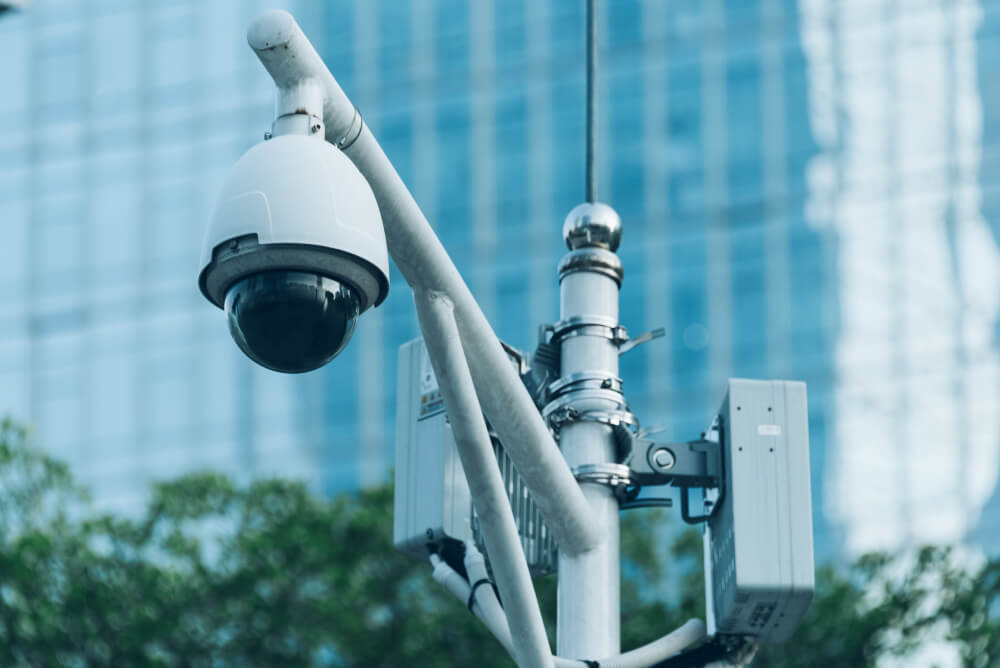Several factors influence the cost of your Govcomm wrong way detection vehicle system installation. Site complexity plays a vital role, especially in intricate or urban environments where modifications may be necessary. The number of detection units you need directly impacts hardware and labor costs; more units can lead to additional maintenance requirements. Integration with existing infrastructure can incur extra expenses for compatibility upgrades. Don’t overlook geographic location and labor rates, as costs can vary markedly. Finally, consider ongoing maintenance costs and support; they can shape your long-term budget strategy for the system. Exploring these elements will provide deeper insights.
Key Takeaways
- Site complexity, including topography and urban density, significantly impacts planning and installation costs.
- The number of detection units required directly correlates with total installation expenses.
- Integration with existing infrastructure may necessitate modifications, adding to the overall costs.
- Labor rates vary by geographic location and skill requirements, influencing installation expenses.
- Power supply upgrades for advanced detection systems can lead to increased installation costs.
Site Complexity
Site complexity plays an essential role in determining the installation costs of a GovComm wrong-way detection vehicle system. When you assess a site, you’ll find that intricate environments demand more planning, engineering, and resources, directly impacting your budget.
For instance, areas with challenging topographies—like steep hills or dense vegetation—require specialized installation techniques and equipment, leading to increased expenses.
In urban sites, where traffic is dense and space is limited, you’ll face additional challenges. The existing infrastructure, such as traffic signals and signage, can complicate your installation efforts. Modifications or upgrades to this infrastructure may become necessary, further driving up installation costs.
You might also need to coordinate logistics meticulously to minimize disruption, which can extend installation timelines and add to your overall expenditure.
Safety considerations are paramount, particularly in high-traffic areas. During installation, you must implement traffic control measures to guarantee the safety of both workers and motorists.
This might involve hiring specialized labor trained to manage installations in such environments, which can introduce additional costs.
Number of Detection Units
The number of detection units you require for a GovComm wrong-way detection vehicle system installation greatly influences your overall costs. Each detection unit adds to the installation cost, encompassing hardware, installation labor, and integration with existing traffic management systems. Consequently, larger installations, especially those covering multiple highway segments or high-traffic areas, necessitate a greater number of detection units, which can greatly escalate your total expenses.
Geographical factors also play a critical role in determining the number of detection units needed. The density and spread of wrong-way entry points directly impact both your initial and ongoing operational costs. More detection units mean more equipment to monitor, which, in turn, leads to increased maintenance and potential upgrades. These expenses should be factored into your budget from the outset.
However, there’s a silver lining: economies of scale. In larger projects, you might find that the cost per detection unit decreases with bulk purchasing. This reduction can help mitigate some of the financial burden associated with a higher number of detection units.
Infrastructure Integration
Integrating a GovComm wrong-way detection vehicle system with existing infrastructure is a significant step that can greatly impact installation costs. The complexity and condition of your current infrastructure play a major role. If modifications or upgrades are necessary to accommodate the new technology, you could encounter additional expenses.
Seamless infrastructure integration with current traffic management systems is essential; this may require specialized hardware or software to guarantee compatibility, additionally affecting your budget.
You must also consider the geographical location of the installation site. Urban areas often present different logistical and regulatory challenges compared to rural settings, which can influence your installation costs. Moreover, coordination with local transportation authorities is important. Confirming compliance with state-specific regulations requires additional planning and resources, adding to your overall expenses.
Don’t overlook the importance of ongoing support and maintenance for the integrated system. This aspect is significant not just for peak performance but also for long-term budget considerations.
Maintenance contracts or service agreements can add to your initial installation costs, but they’re necessary to guarantee the system operates effectively over time.
Power Supply Upgrades
Upgrading power supply systems is often vital for meeting the energy demands of GovComm’s advanced Wrong-Way Vehicle Detection System, which utilizes high-resolution bi-spectrum cameras and AI processing units. These components require a robust and reliable power source to function effectively, leading to the need for power supply upgrades in many installations.
The installation of dedicated circuits or larger transformers can markedly increase installation expenses, particularly in areas where existing infrastructure is inadequate. You’ll need to evaluate your current electrical setup to determine if it can support the new system or if substantial upgrades are necessary.
Additionally, incorporating backup systems, such as uninterruptible power supplies (UPS), is essential to guarantee continuous operation during power outages, further adding to the overall costs.
The complexity of these power supply upgrades can also be influenced by local government regulations and utility company requirements. Compliance with these regulations often necessitates specific upgrades or permits, which can complicate the installation process and inflate expenses.
You’ll want to factor these potential costs into your budget from the outset to avoid surprises later.
Geographic Location
Installation costs for GovComm’s vehicle detection systems are heavily influenced by geographic location. Variations in labor rates between urban and rural areas can lead to significant disparities in installation expenses. In urban centers, you might encounter higher labor costs, while rural locations often present more affordable options.
Moreover, the complexity of the local traffic infrastructure plays an essential role in determining these costs. Areas with sophisticated traffic management systems can streamline integration, potentially lowering your overall expenses. Conversely, if your site lacks such systems, you may face higher installation costs due to the need for more equipment and labor.
Weather conditions also factor into installation costs. Regions prone to severe weather may require enhanced protective measures for the detection systems, leading to increased expenses.
Additionally, regional regulations and permitting processes can impact timelines and costs. Stricter requirements in specific areas might necessitate more extensive planning and additional resources, further driving up installation costs.
Labor Rates
Labor rates for GovComm’s wrong-way detection vehicle system installations can vary widely, influenced by factors such as geographic location and the specific skill sets required. In urban areas, where demand for skilled technicians is higher, you’ll often see elevated labor rates. The complexity of the installation, particularly when specialized knowledge in traffic management systems is needed, further drives costs up.
Here’s a breakdown of typical labor rates you might encounter:
| Skill Level | Hourly Rate Range | Factors Impacting Cost |
|---|---|---|
| General Technician | $50 – $75 | Basic installations, minimal modifications |
| Specialized Technician | $75 – $150 | Traffic management systems expertise |
| Project Manager | $100 – $200 | Oversight, expedited timelines |
Additionally, seasonal factors play an important role. During peak construction seasons, labor availability can dwindle, leading to increased rates as companies compete for skilled workers. This means you might end up paying a premium for expedited installations or specialized crews, especially if you need the project completed quickly.
To keep your costs manageable, it is important to take into account these variables during your planning phase. Understanding how geographic location and skill requirements affect labor rates will help you budget effectively for the installation of GovComm’s systems.
Maintenance and Support Costs
Maintaining the GovComm wrong-way detection vehicle system involves ongoing costs that encompass both hardware and software aspects. These maintenance and support costs are fundamental for guaranteeing the system operates effectively and efficiently over time. To better understand these costs, consider the following key components:
- Hardware Maintenance: Regular inspections and repairs of physical components are necessary. Environmental factors can notably affect the longevity and performance of these systems, which can lead to unexpected expenses if not properly maintained.
- Software Updates: Keeping the software updated is essential for enhancing detection algorithms and overall system health. Regular updates can improve accuracy and mitigate potential issues, but they also incur costs associated with the update process.
- Customer Support: Access to dedicated customer support is critical for addressing any operational challenges you might encounter. This ongoing assistance contributes to your maintenance expenses but guarantees that the system remains effective and responsive.
- Life Cycle Cost Analysis: When evaluating the total cost of ownership, consider the annual maintenance and operation costs, which can vary based on the complexity and scale of your installation. A thorough support plan can lead to long-term savings by preventing incidents and enhancing system reliability.
Investing in these components is necessary for maximizing the effectiveness of the GovComm system, guaranteeing safety on roadways while managing your overall costs effectively.
Frequently Asked Questions
What Is the Wrong Way Vehicle Detection System?
The wrong way vehicle detection system (WWDVS) uses advanced AI technology to identify and deter wrong-way driving incidents on highways.
It employs high-resolution bi-spectrum cameras for continuous monitoring, capturing both visible and thermal images.
The system operates through detection, verification, and alert processes, providing timely notifications to drivers and authorities.
What Is Wrong-Way Driver Detection Systems?
Wrong-way driver detection systems (WWVDS) utilize advanced technologies like bi-spectrum cameras and AI algorithms to identify vehicles entering highways incorrectly.
They operate in three steps: detecting wrong-way vehicles, verifying their movements, and alerting authorities.
You’ll find that these systems send real-time notifications to Traffic Management Centers, activating flashing warning signs for drivers.
This technology has proven effective, showing significant reductions in wrong-way incidents and enhancing overall road safety.
Conclusion
In conclusion, understanding the various factors influencing the cost of a GovComm wrong-way detection vehicle system installation is essential for effective budgeting. By evaluating site complexity, the number of detection units, infrastructure integration, and local labor rates, you can make informed decisions. Additionally, accounting for potential power supply upgrades and ongoing maintenance guarantees long-term system efficiency. By considering these elements, you’ll be better equipped to navigate the financial landscape and achieve a successful installation.






